Gemini 9: NASA's Troubled Rendezvous Mission in Photos
The Entire Team
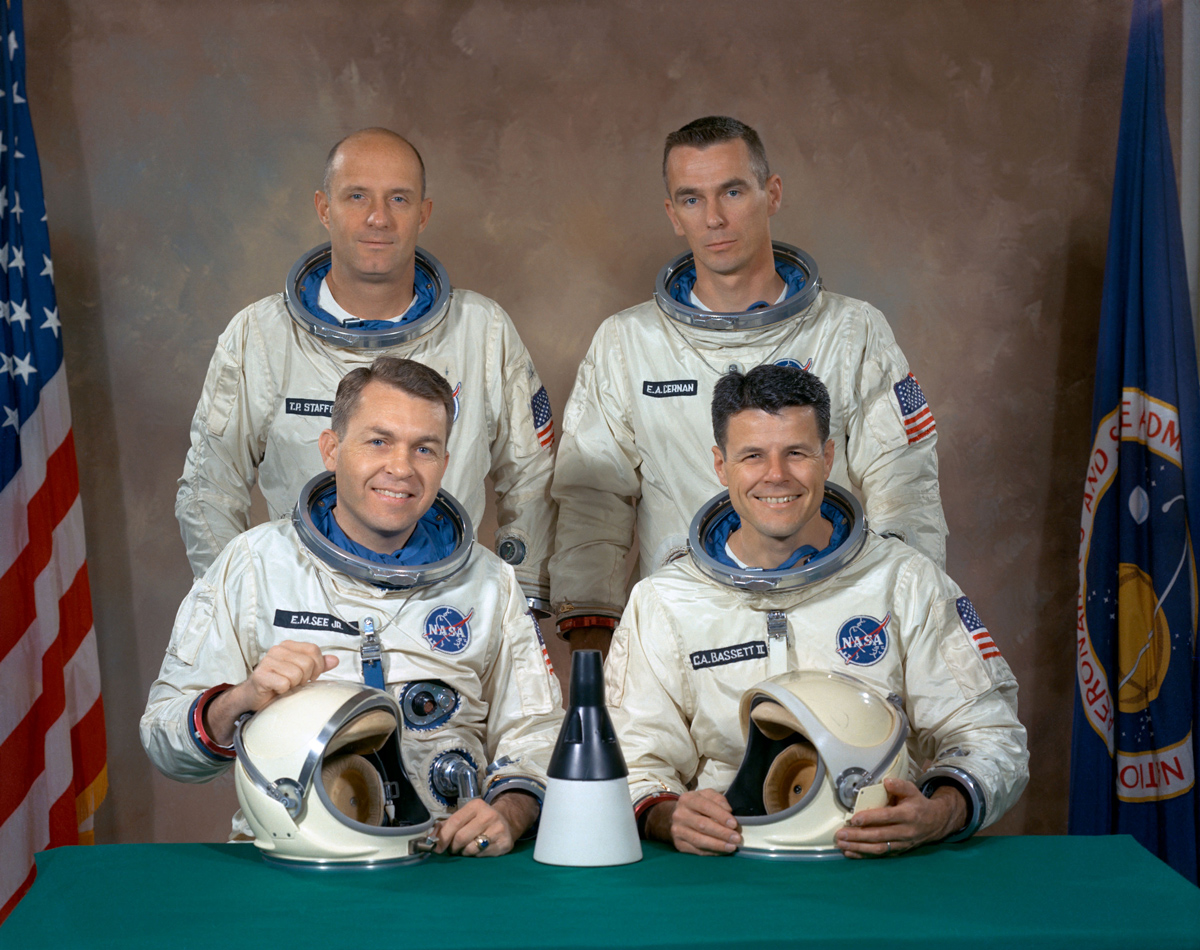
On June 3, 1966, two NASA astronauts blasted off on the three-day Gemini 9 mission to rendezvous with another spacecraft and test out the Air Force's Astronaut Maneuvering Unit — essentially a rocket-powered jet pack. But not everything went according to plan as the rendezvous, docking and spacewalk encountered some hiccups during the mission.
Here: the prime crew of astronauts Thomas P. Stafford, command pilot (on the left) and Eugene A. Cernan, pilot, stand behind the original prime crew of astronauts Elliot M. See, Jr. and Charles A. Bassett II for an official NASA photo on Jan. 5, 1966. Bassett and See were killed in an unrelated plane crash on Feb. 28, 1966.
For Safety
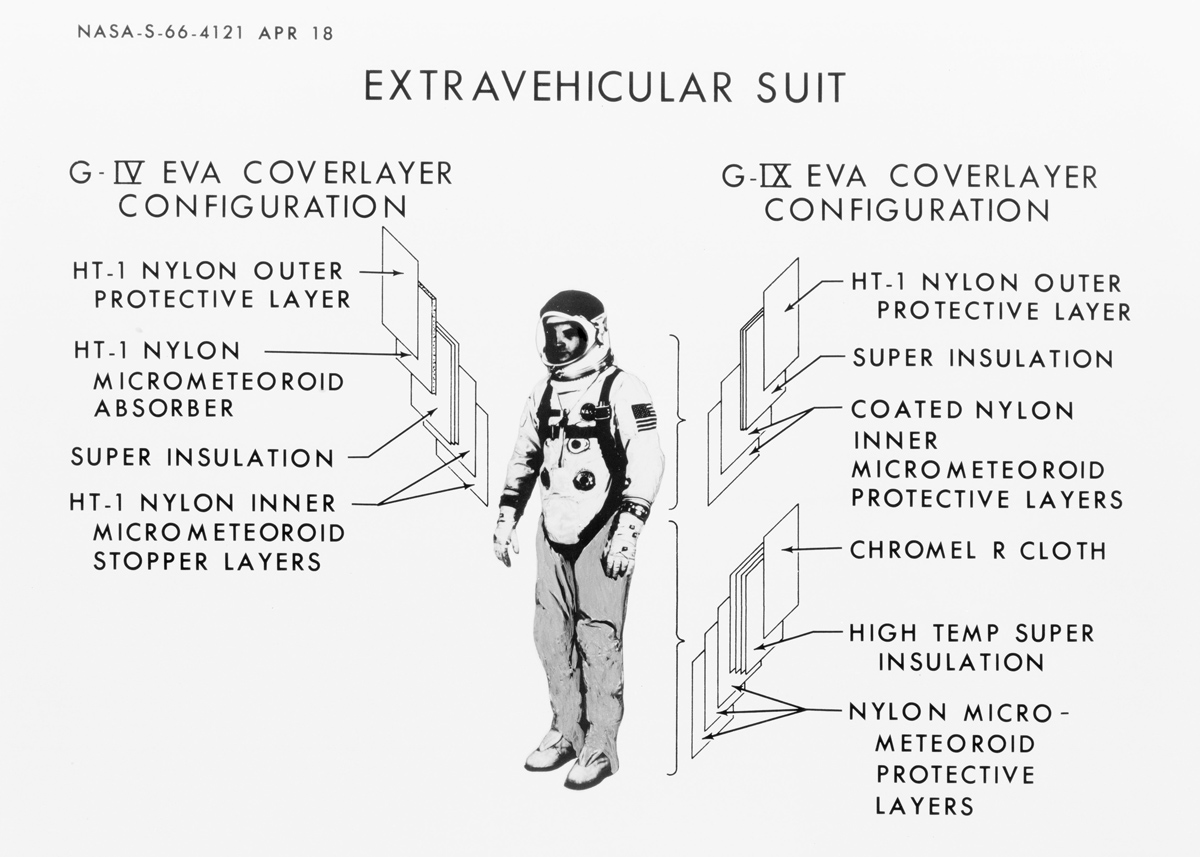
The Gemini 9 EVA spacesuit was designed with seven layers of protection versus the Gemini 4 with five. [Gemini Program: Two-Man Prep for Moon Missions]
For Practice
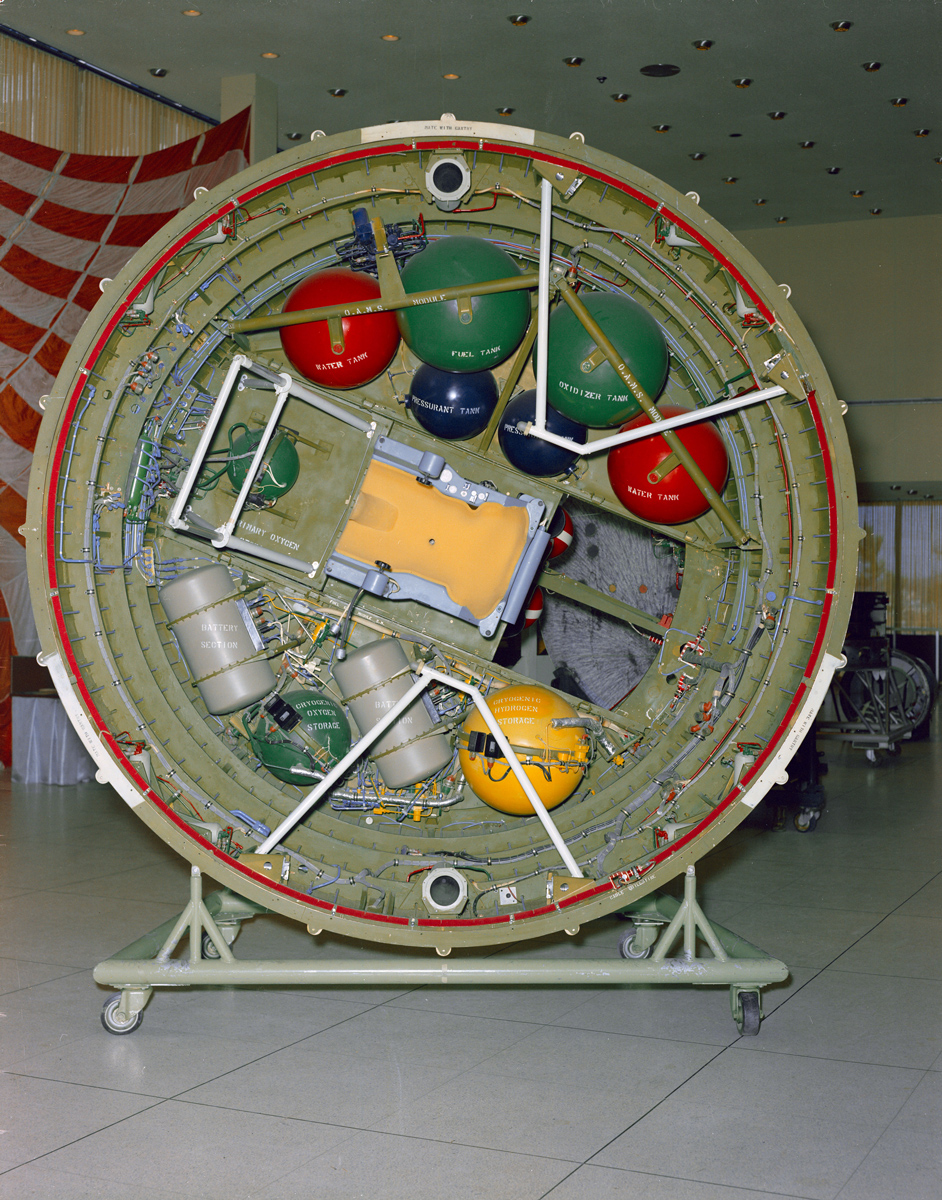
For simulation purposes, the adapter equipment section of the Gemini 9 spacecraft was mocked-up by NASA. The device provides volume and attach points for multiple system modules including the Astronaut Maneuvering Unit (AMU) backpack at center. Other systems served include the Orbit Attitude Maneuver System, Environmental Control System primary oxygen supply, batteries, coolant, and electrical and electric components.
Getting to Know the Mechanics
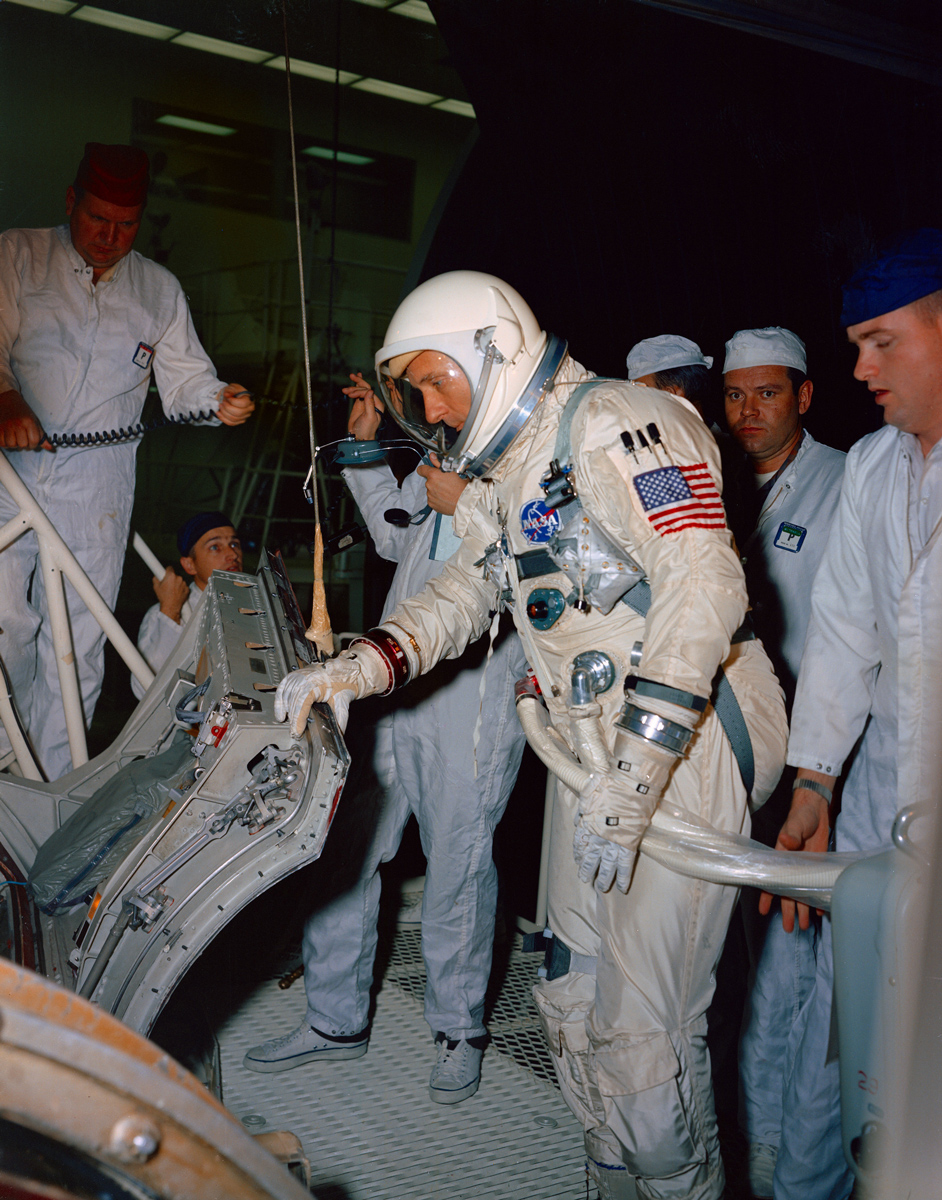
On Feb. 8, 1966, at the McDonnell plant in St. Louis, astronaut Thomas P. Stafford, Gemini 9 prime crew command pilot, trains to familiarize himself with the Gemini 9 spacecraft.
Learning Curve
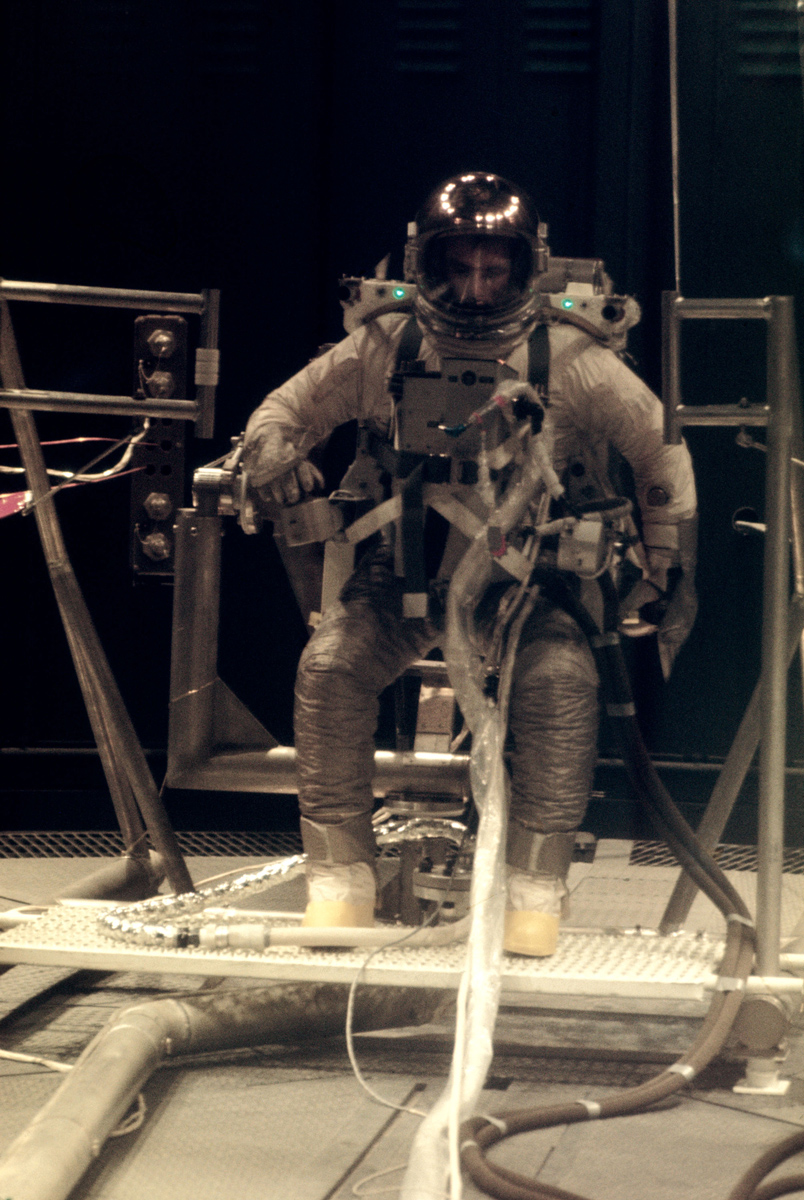
On Feb. 19, 1966, in Chamber B of the Environmental Test Laboratory in Building 32, astronaut Eugene A. Cernan, Gemini 9 pilot, practices on the Astronaut Maneuvering Unit. The AMU incorporates a chest pack and a backpack and will be used during extravehicular activities during the Gemini 9 mission.
Space on Earth
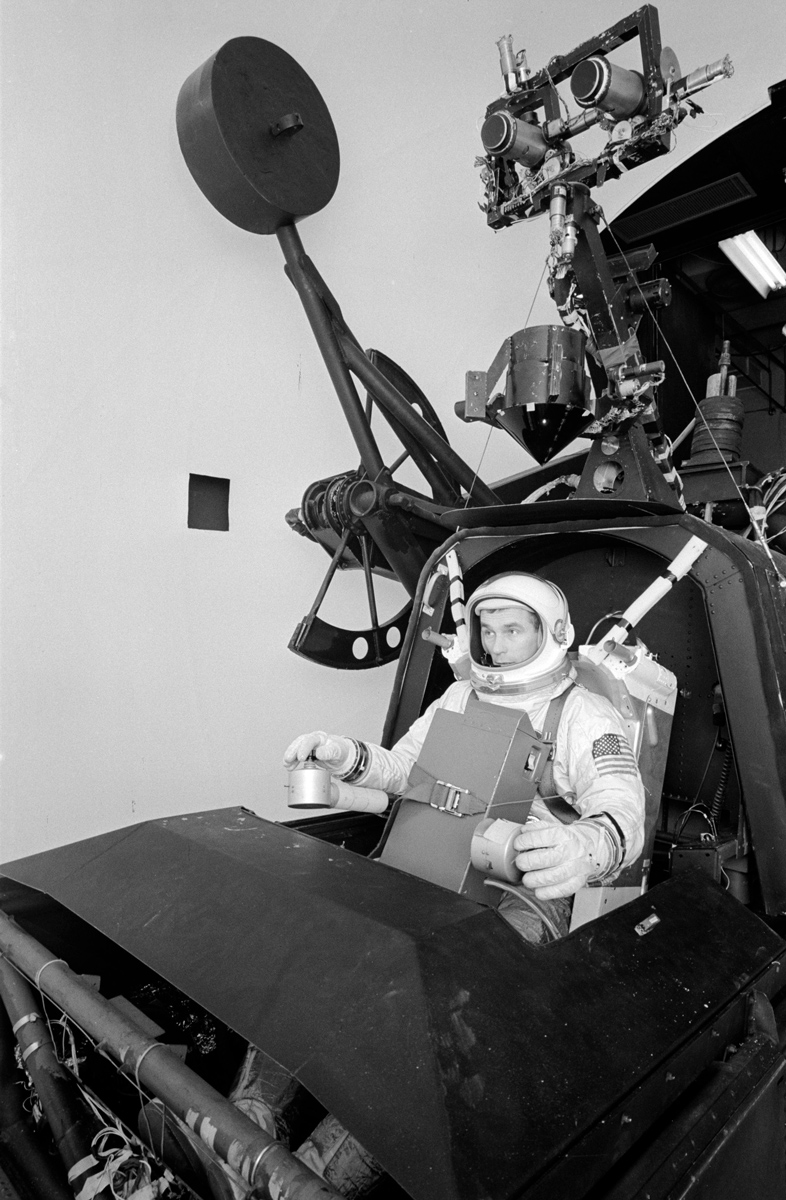
At LTV Corp. in Dallas, Texas, astronaut Eugene A. Cernan, Gemini 9 pilot, sits inside a unique manned Aerospace Flight Simulator. The device replicates the sensations and visuals of actual spaceflight, allowing the astronaut to work out procedures, solutions and simulated missions with great accuracy using complex computers. The astronaut sits in a gondola resembling a spacecraft which maneuvers in response to his controls, replicating roll, pitch and yaw. In this version of the machine, the controls were removed and the AMU backpack installed. Cernan wears an inflated pressure suit and an Extravehicular Life Support system.
On and Off and On and Off
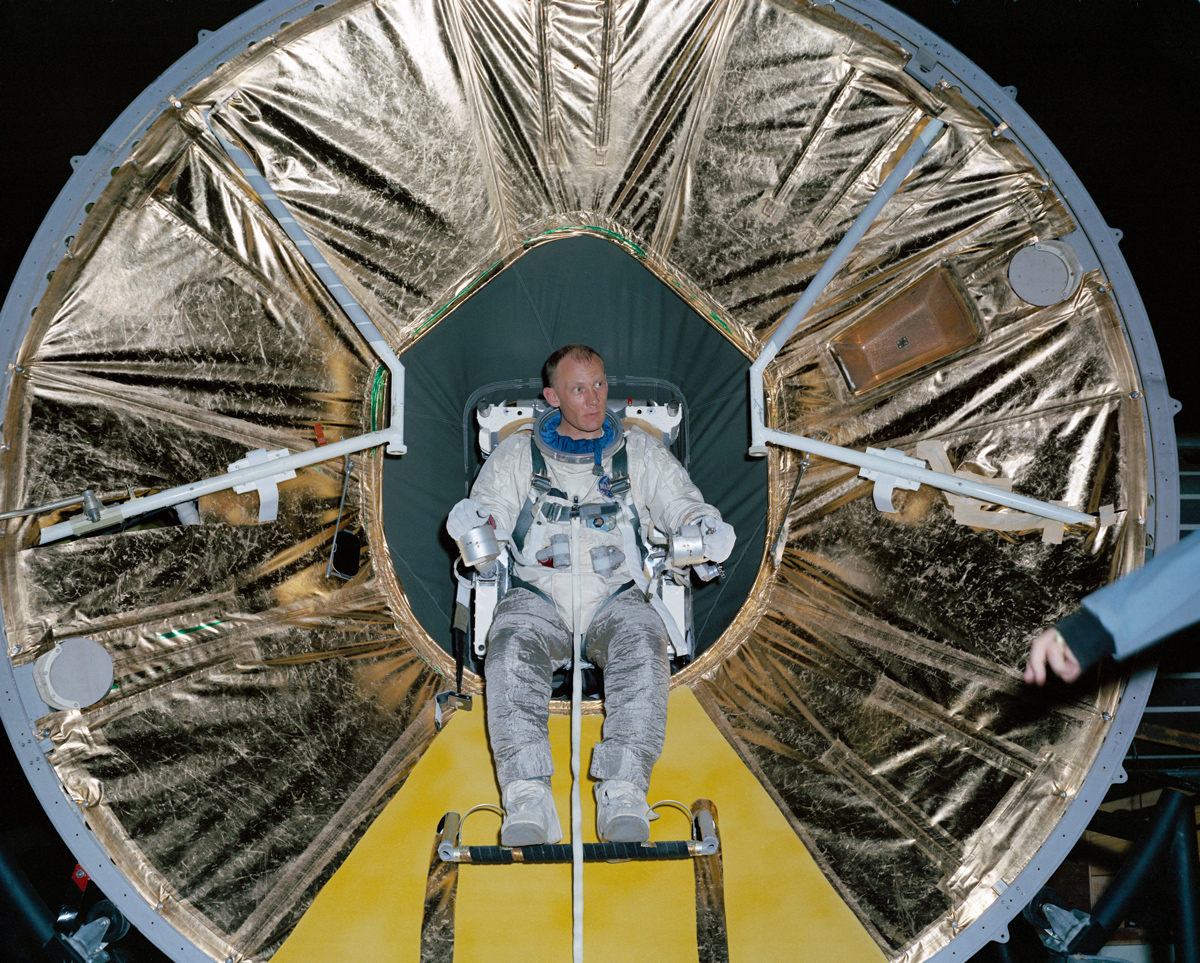
Inside Building 5, astronaut Edwin E. Aldrin, Jr., backup crew pilot for NASA's Gemini 9 mission, practices getting into the AMU. The device will be used by astronaut Eugene A. Cernan, prime crew pilot for the Gemini 9 mission, during the EVA.
Get the Space.com Newsletter
Breaking space news, the latest updates on rocket launches, skywatching events and more!
Training in the Ocean
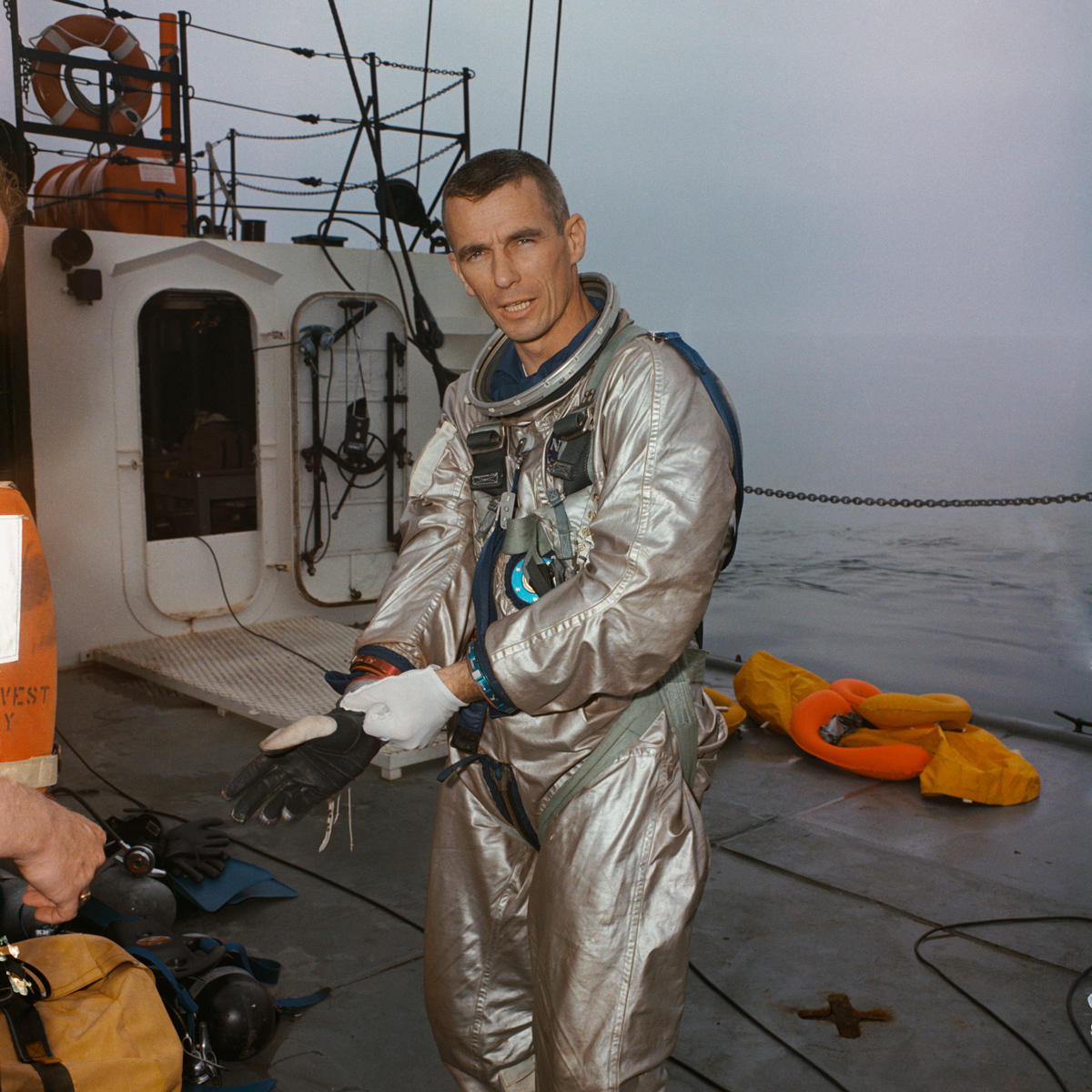
In the Gulf of Mexico on April 9, 1966, astronaut Eugene A. Cernan, Gemini 9 mission prime crew pilot, stands on NASA's Motor Vessel Retriever, ready for water egress training.
Fashion Model
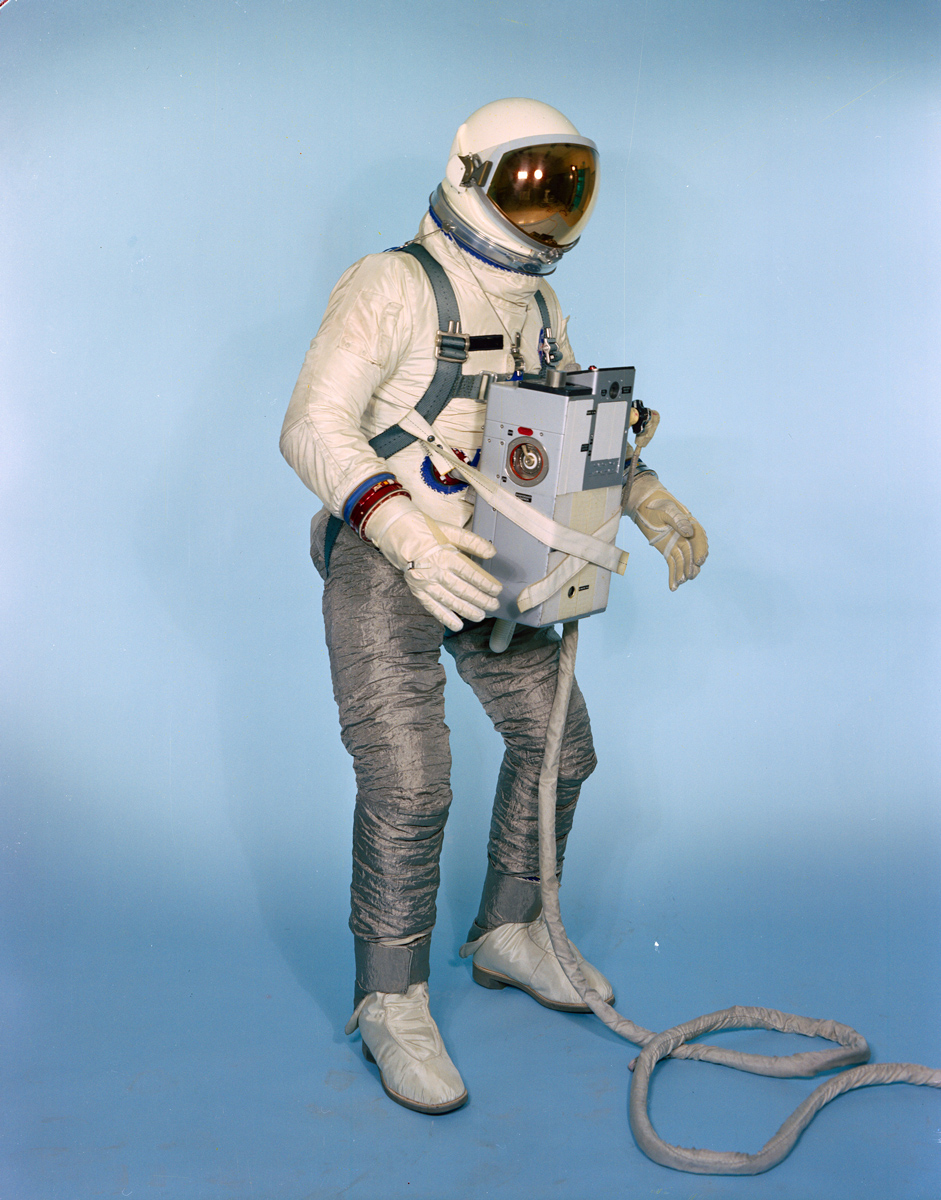
Fred Spross of the Crew Systems Division, acts as test subject for spacesuit assembly configured for extravehicular activity. Spross also dons the Extravehicular Life Support System chest pack. A cloth woven from stainless steel fibers, Chromel-R, covers the spacesuit legs.
New Materials
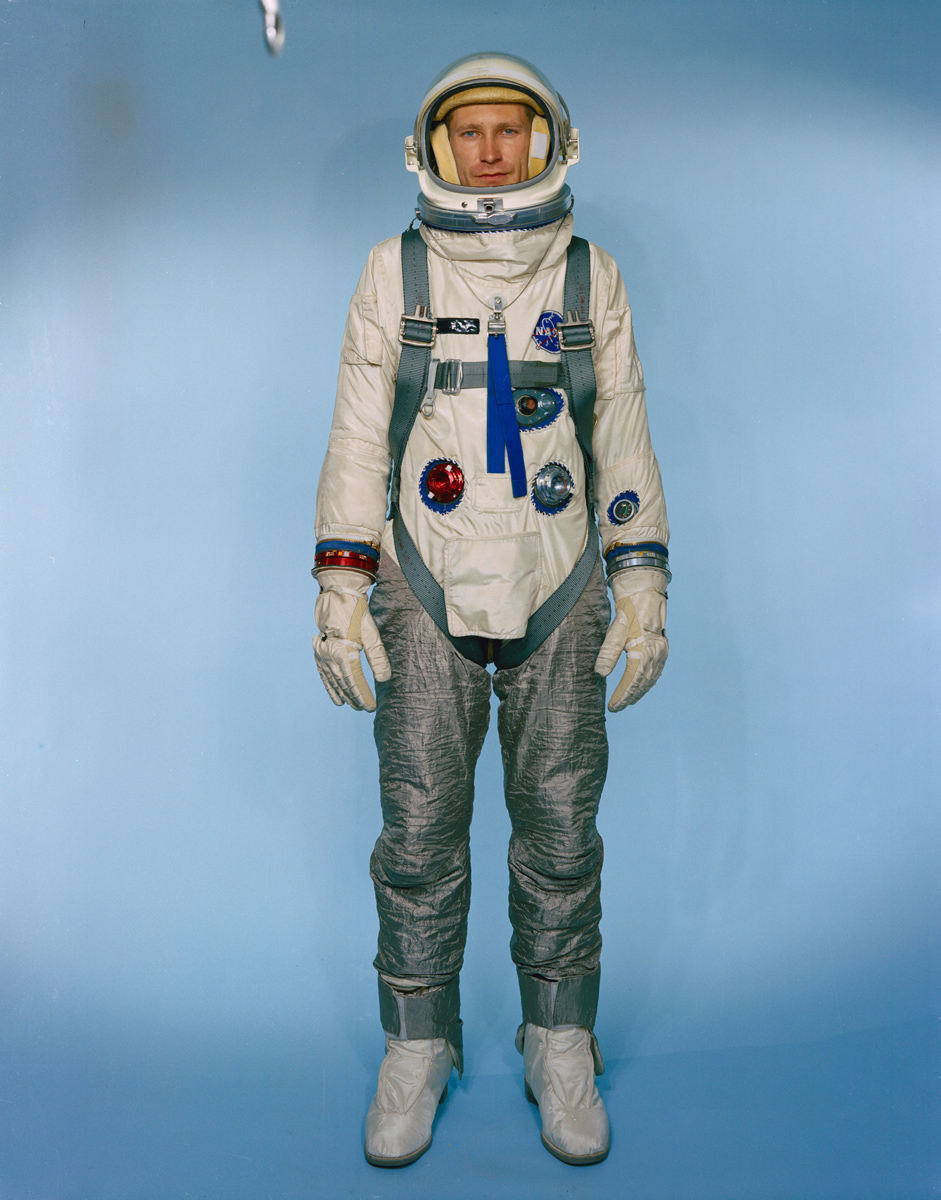
Chromel-R , a cloth woven from stainless steel, protects the astronaut from the hot exhaust expelled by the thrust of the Astronaut Maneuvering Unit backpack. The AMU, made up of the Gemini spacesuit, backpacks and chest pack, are essentially a miniature manned spacecraft.
Safety First
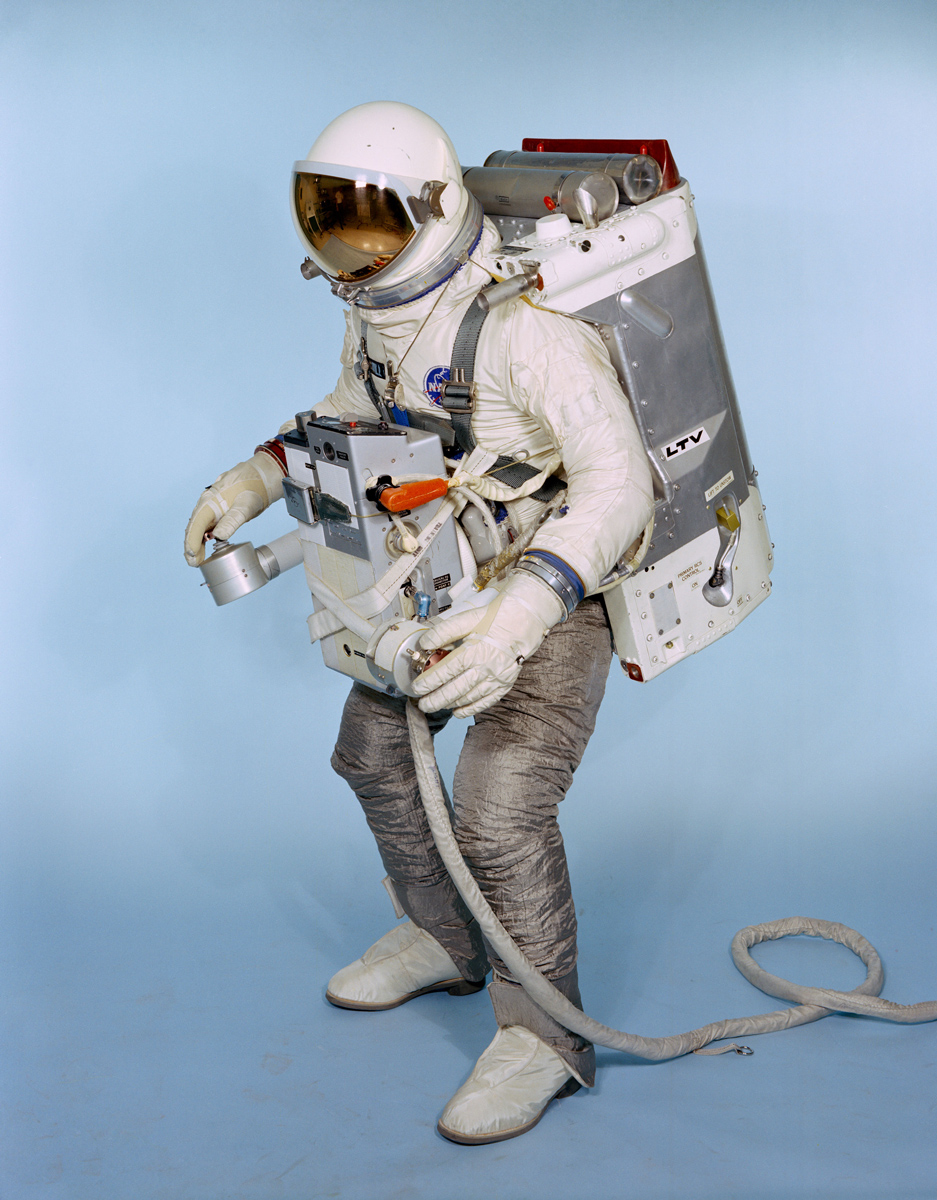
Chromel-R protects the astronaut from the heat expelled by exhaust related to the thrust of the Astronaut Maneuvering Unit backpack. The AMU is essentially a miniature manned spacecraft and includes the Gemini spacesuit, backpacks and chest pack, are essentially. Astronaut Eugene A. Cernan, prime crew pilot for the Gemini 9 mission, will utilize an AMU during the extravehicular activities.
Join our Space Forums to keep talking space on the latest missions, night sky and more! And if you have a news tip, correction or comment, let us know at: community@space.com.
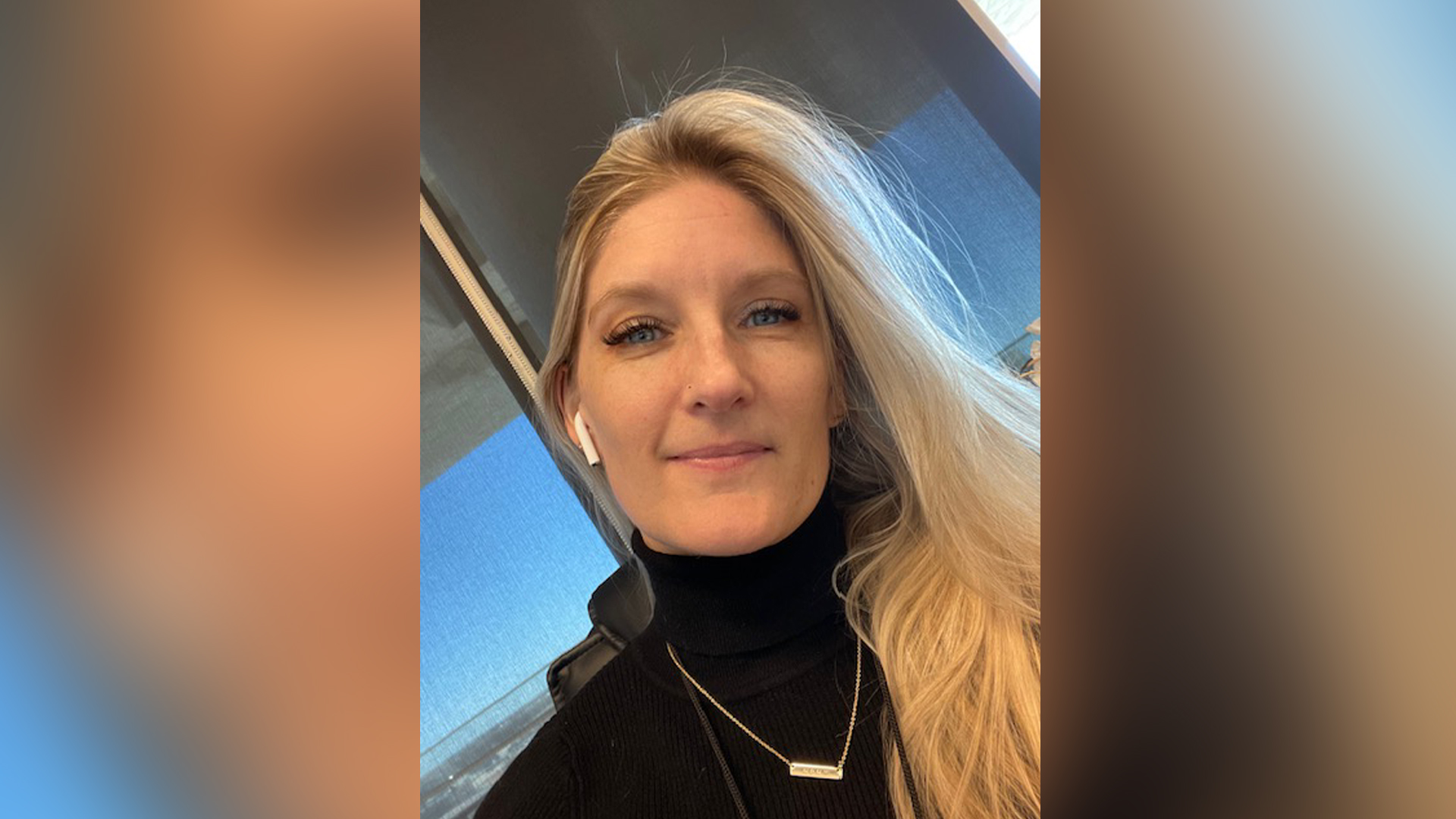
Christine Lunsford joined the Space.com team in 2010 as a freelance producer and later became a contributing writer, covering astrophotography images, astronomy photos and amazing space galleries and more. During her more than 10 years with Space.com, oversaw the site's monthly skywatching updates and produced overnight features and stories on the latest space discoveries. She enjoys learning about subjects of all kinds.









